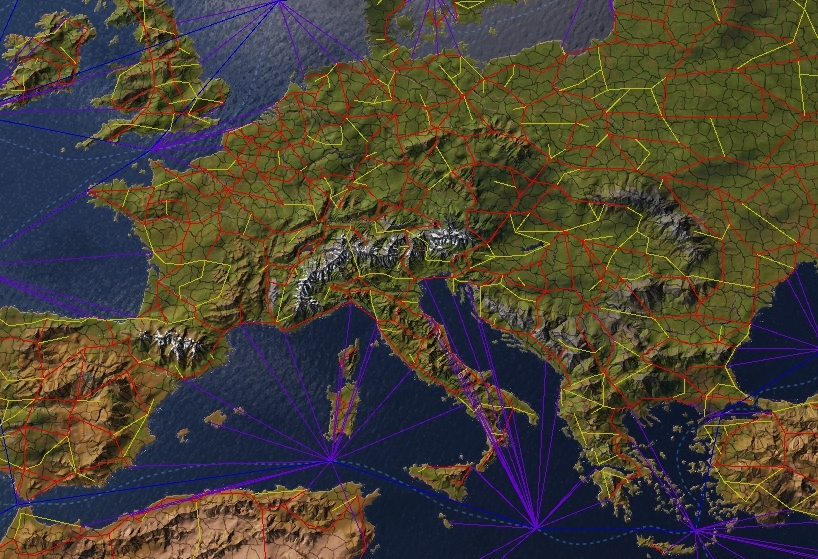No, we build in every state. There are 660 states but so many provinces my browser almost crashes trying to load a map of them all. I don't think having to build every line instead of incrementing a number is any more meaningful, it seems like busywork to fill your downtime because you play on slower speeds. We also do not agree that the positives outweigh the negatives, I think it's bad idea to bring in, especially as you've suggested it, and it would kill my interest in the game because I'm tired of busywork in Paradox games that just add clicks, which is all this feels like. I think *improved logistics* is a good idea, which is not the same thing as saying I think building rails between specific points is a good idea.
You assume they don't interact with underlying systems, but there's no reason to assume that.
I don't really care that you don't think performance isn't a valid reason to oppose something, it's something the devs have explicitly said is a determining factor in whether or not they implement certain features. So you can not care about it all you want, it won't make it any less important.
Ok, I see we’re running in circles. What I’m proposing is connecting states by building rail lines at the province level. I’m not entirely sure what hierarchy applies in Victoria 3 — there are so many layers of "location" — so apologies if I wasn’t precise earlier.
But again, I feel there’s a bad faith argument creeping in. I envision a system where we build rail lines from State PoI to State PoI, where the order and level of connection matter. Railways in reality aren’t omnipresent — they’re planned networks, with main lines and side branches. This complexity should be reflected in-game, so long as it adds meaningful decisions.
Historically, trains were the driving force of the industrial revolution. They didn’t just move goods — they unified economies, shaped migration, and dictated military logistics. The U.S. transcontinental railroad connected frontier and industry. In Europe, the German states built lines with political intent, forging national unity. Russia’s Trans-Siberian Railway enabled state control over vast, disconnected regions. These weren’t just infrastructure — they were instruments of transformation.
And yet, Victoria 3 barely depicts this. Rail lines exist, but as abstract modifiers. There's almost no interaction with the map itself. Players often disable handcrafted environments — which is a shame, because they look great. A proper railway system could fix that: it would encourage zooming in, placing lines, shaping geography. It would justify the visual effort — and yes, even the cosmetics they sell for the map.
The “clicks” and “performance” argument feels weak and evasive. It doesn’t actually engage with the suggestion itself — instead, it’s the kind of blanket objection you could apply to any feature or idea. Yes, every addition affects clicks and performance to some extent — that’s a given. The real question is whether the gameplay value justifies that cost. Using it as a catch-all rebuttal is not just unconvincing — it’s sidestepping the core of the discussion.
The main issue with Victoria 3 at launch was that there wasn’t much to do. Now, with 53 mods, it’s OK for me — but vanilla still feels like you’re mostly waiting in large chunks for buildings and laws to tick over. I interpret your argument for speed as: Vicky 3 has so few interactions that you can just fast-forward through the game. And if that’s what you like, that’s fine.
But I argue — if a game has nothing truly to do but speed through it, you might as well play Need for Speed or no game at all.
And to finally shoot the bird: Sid Meier once said, “Games are a series of interesting decisions.”
So, based on that guy Sid — more interesting decisions make a better game.
- 2
- 2
- 1


